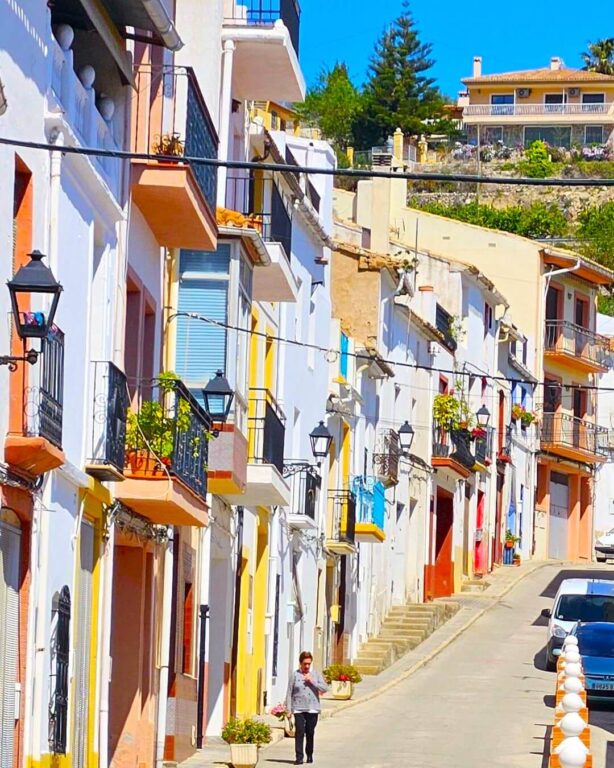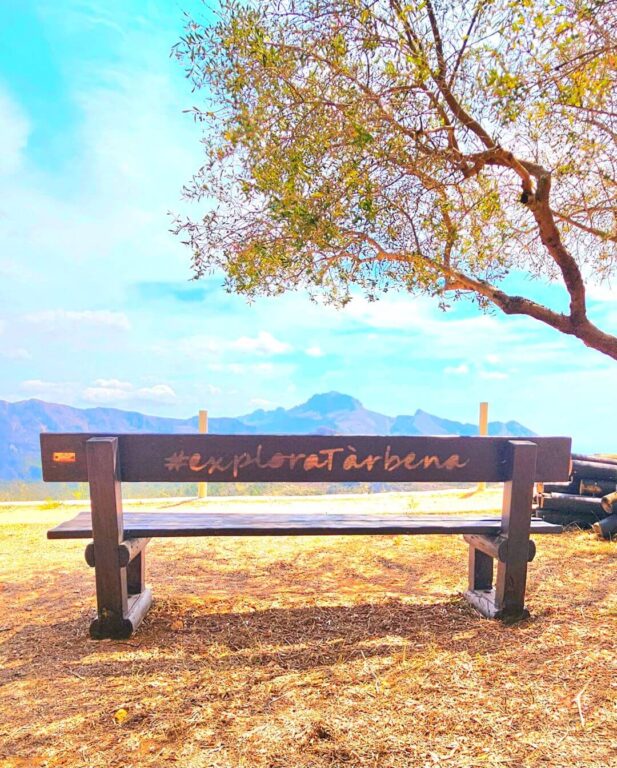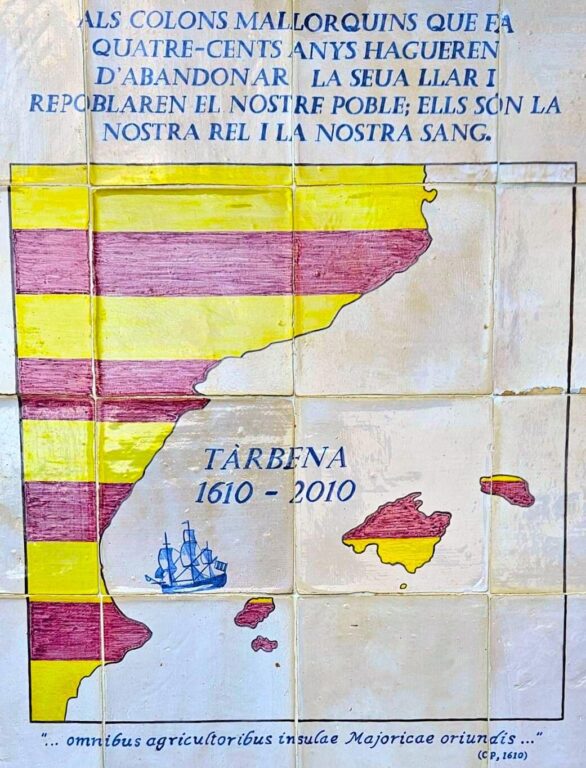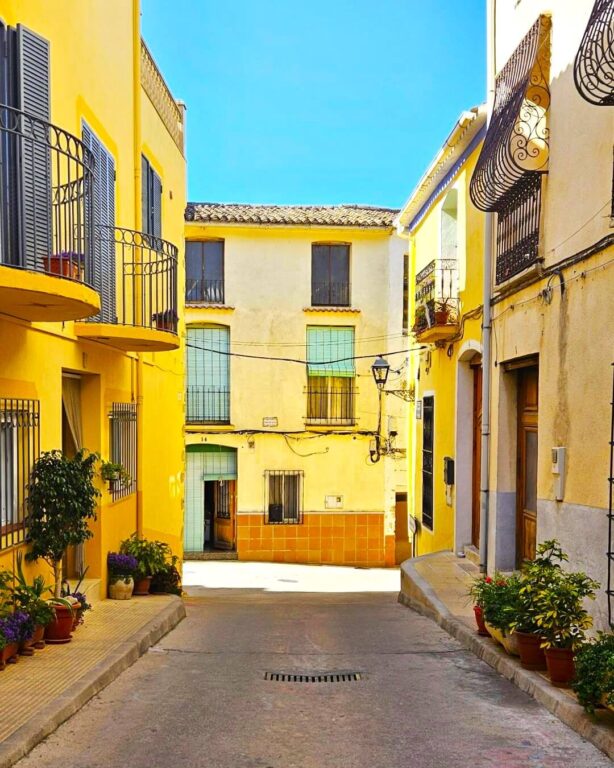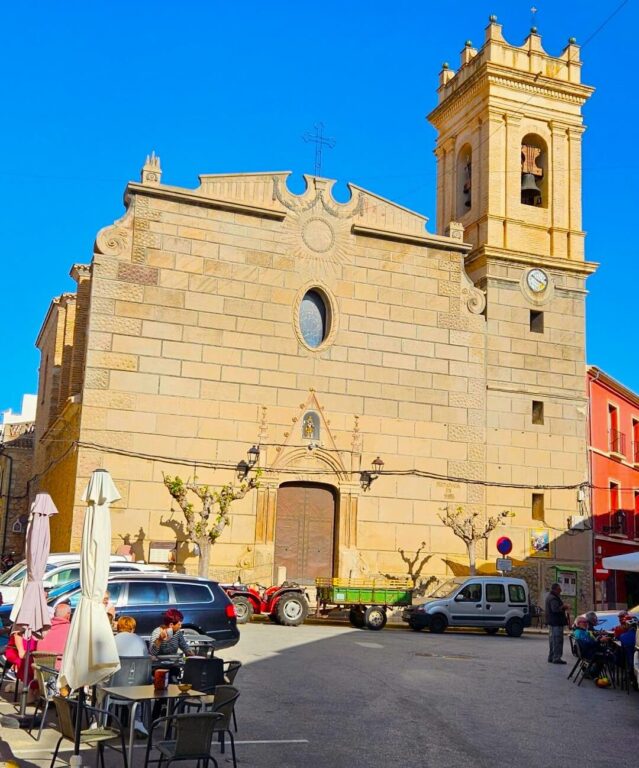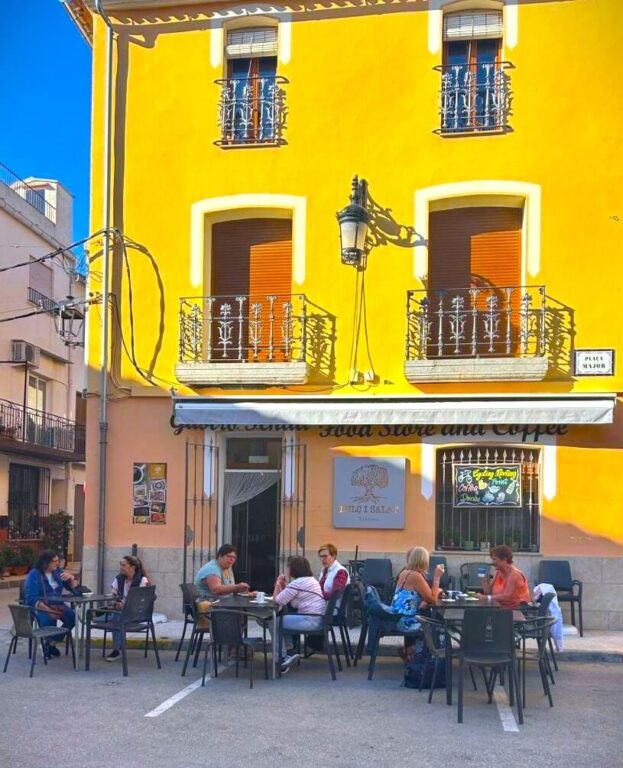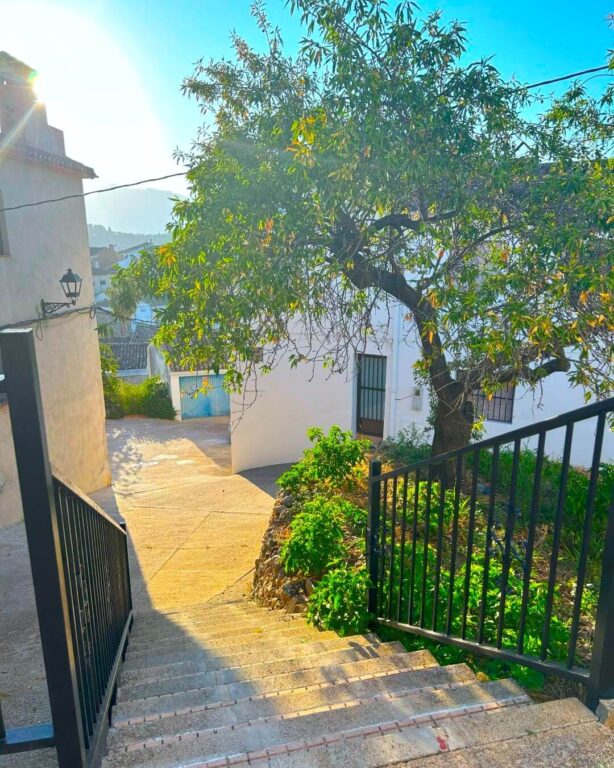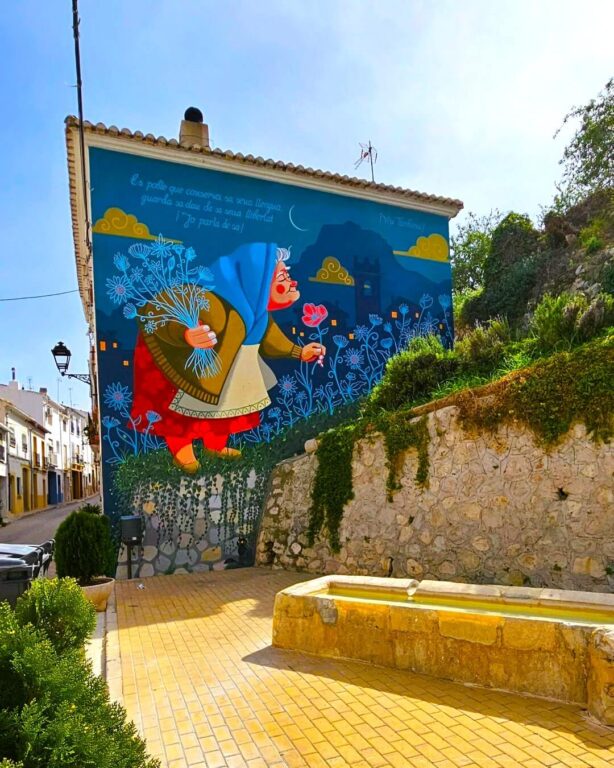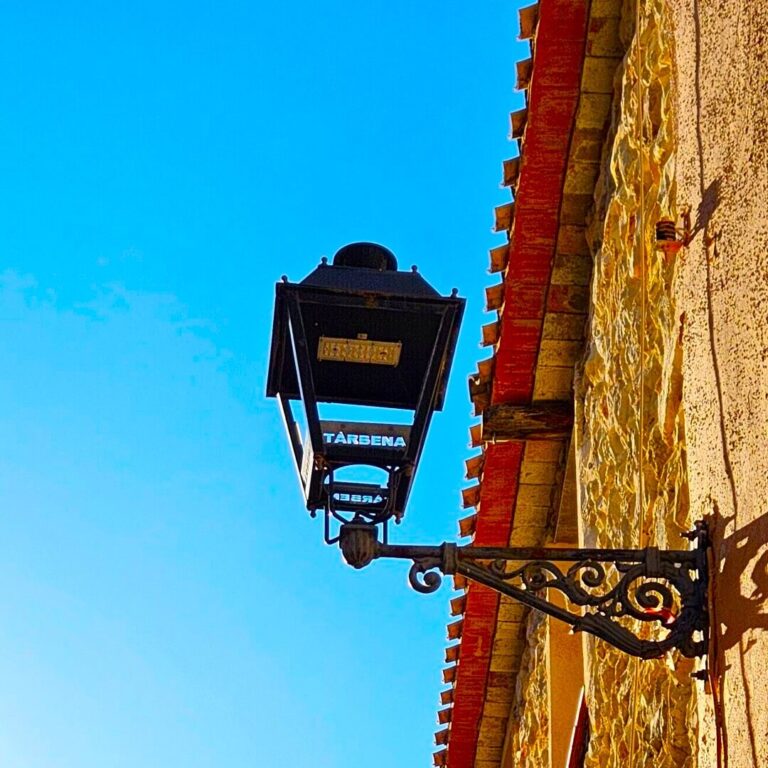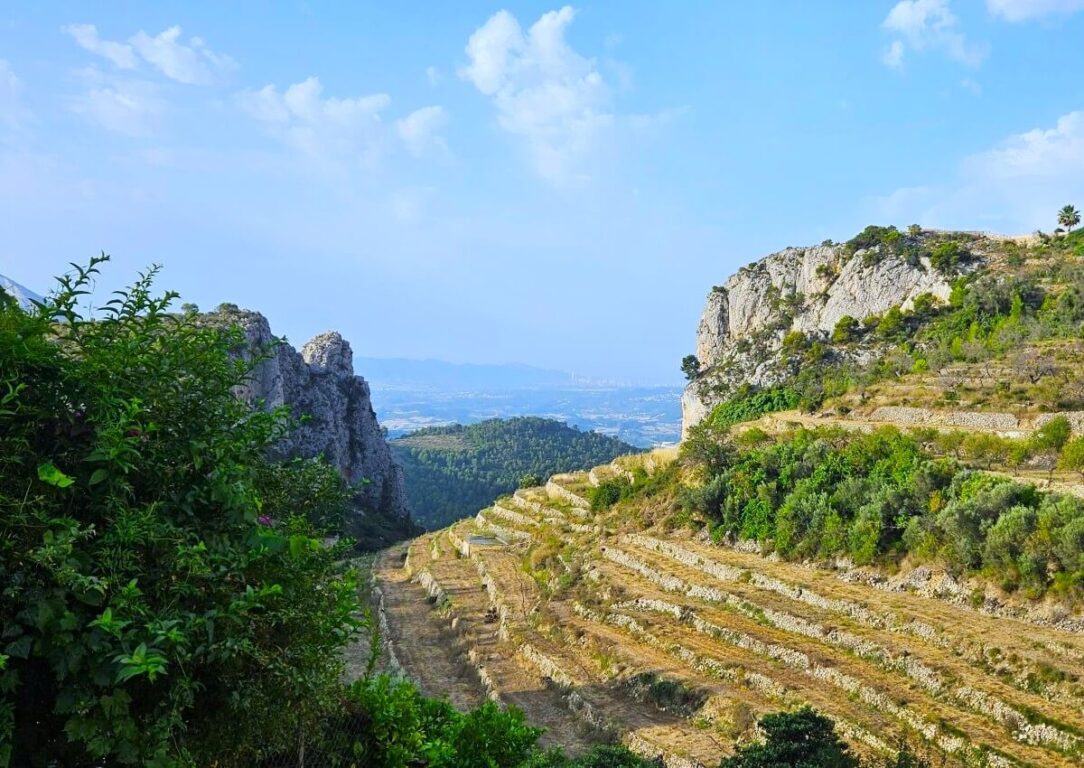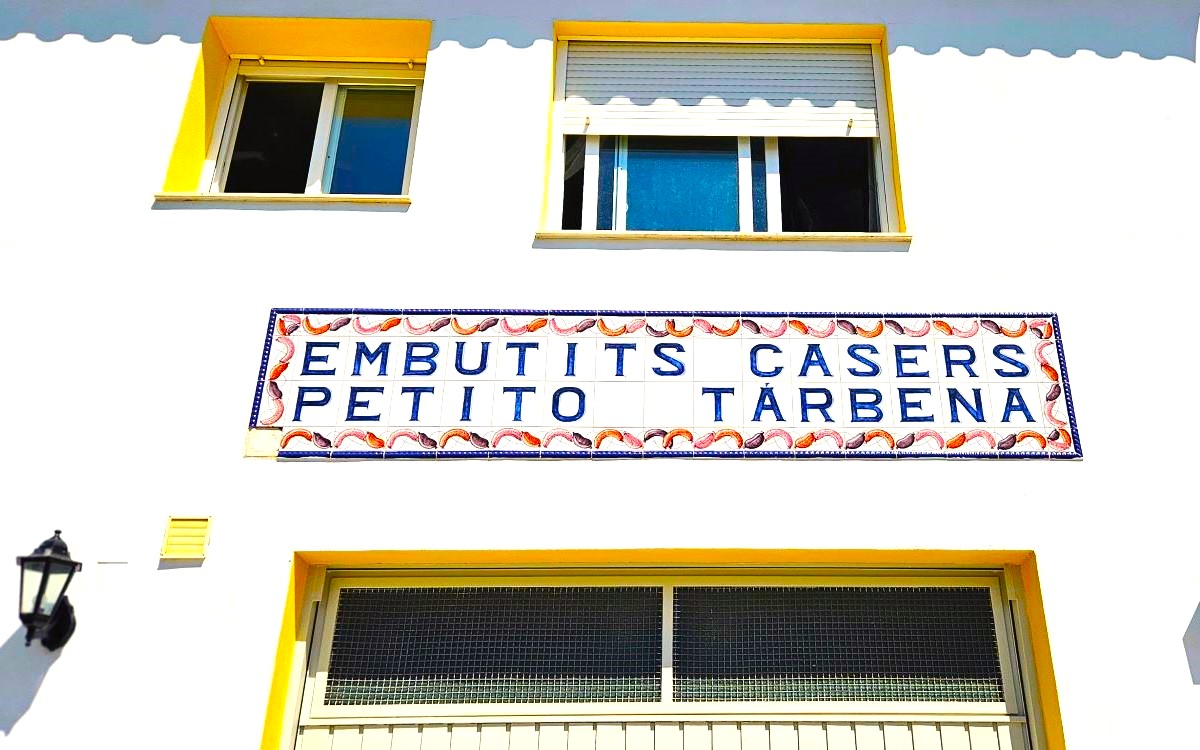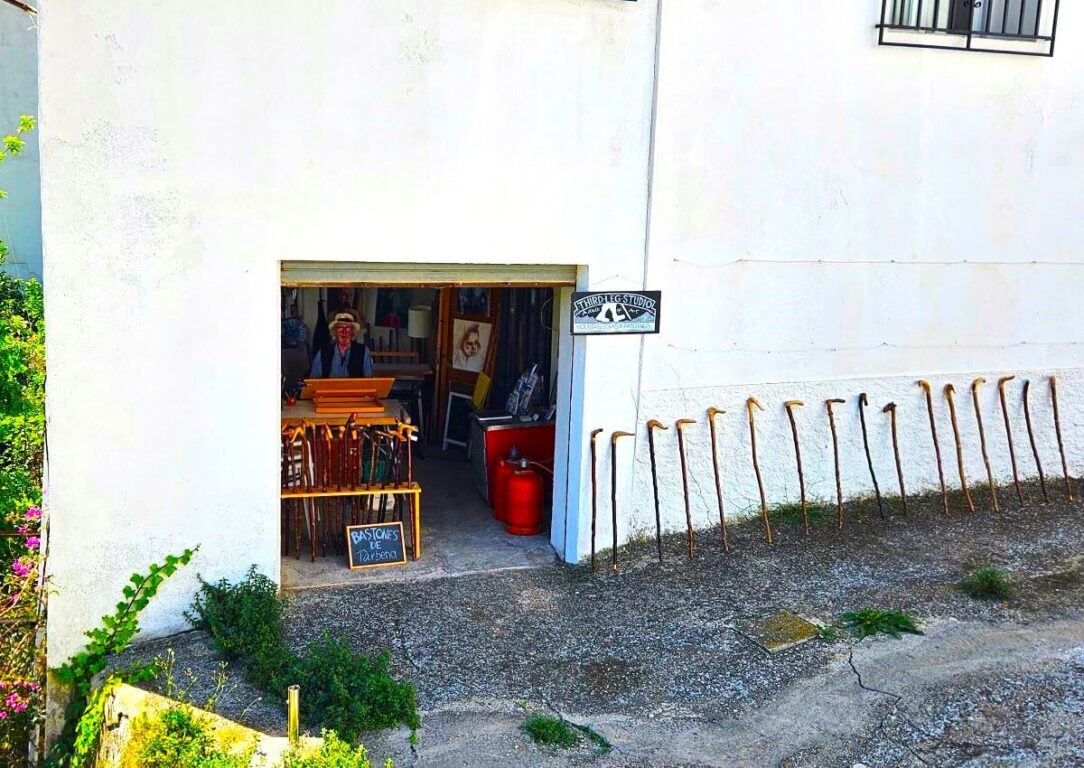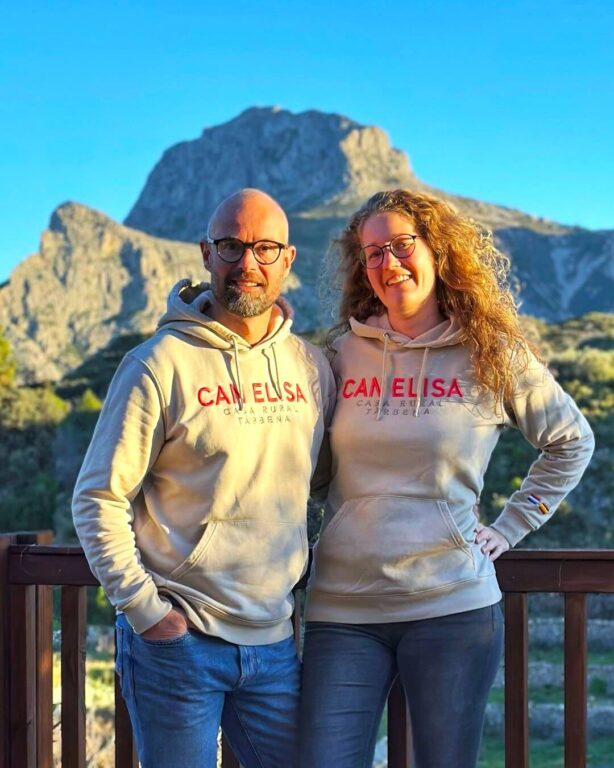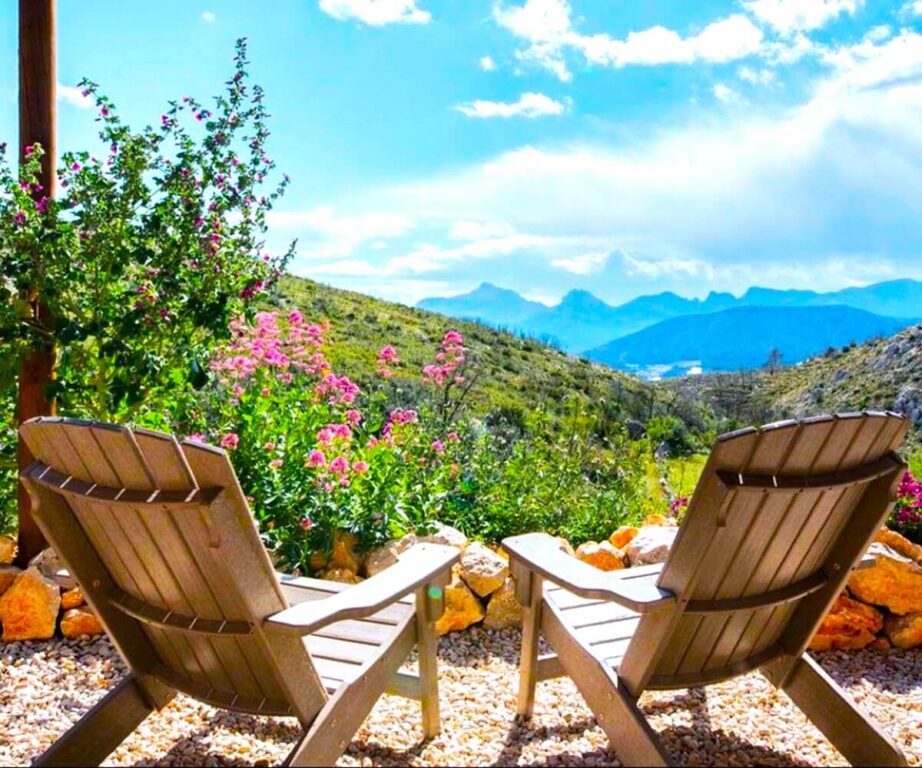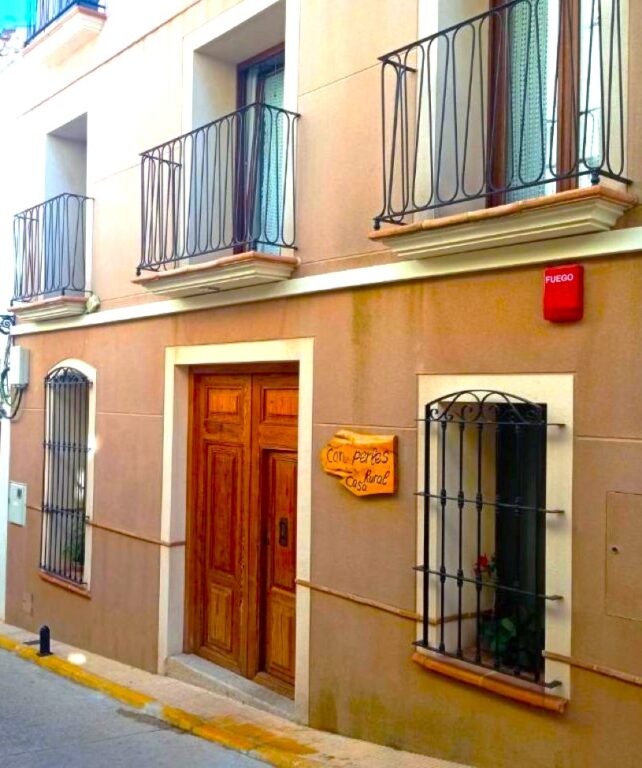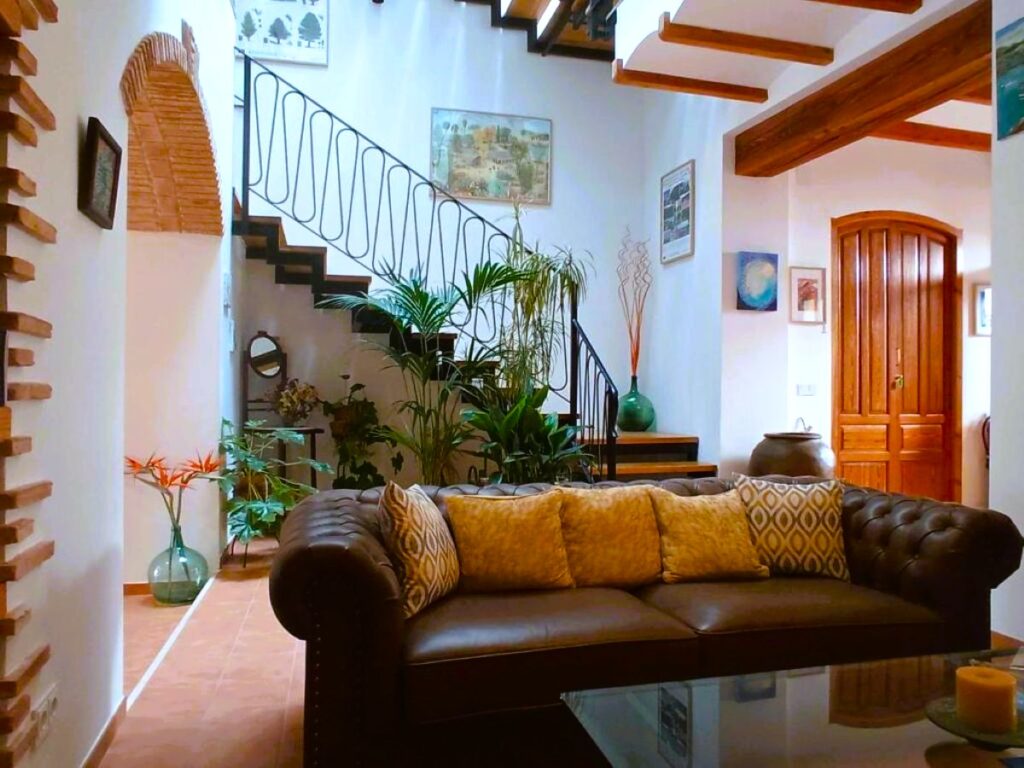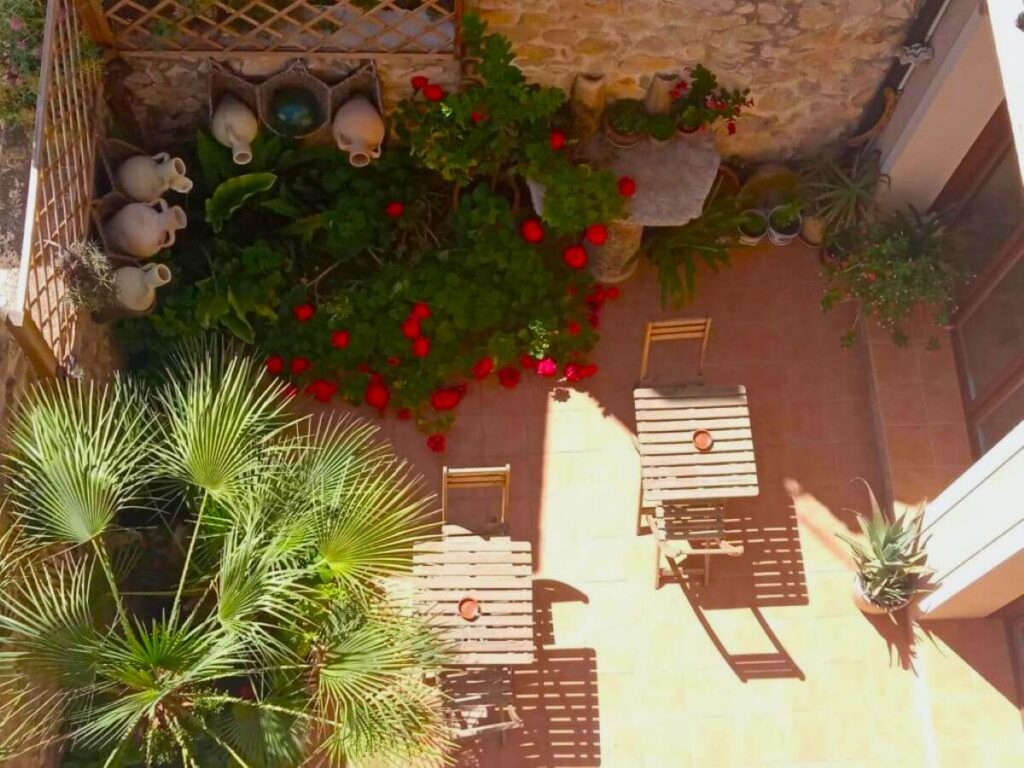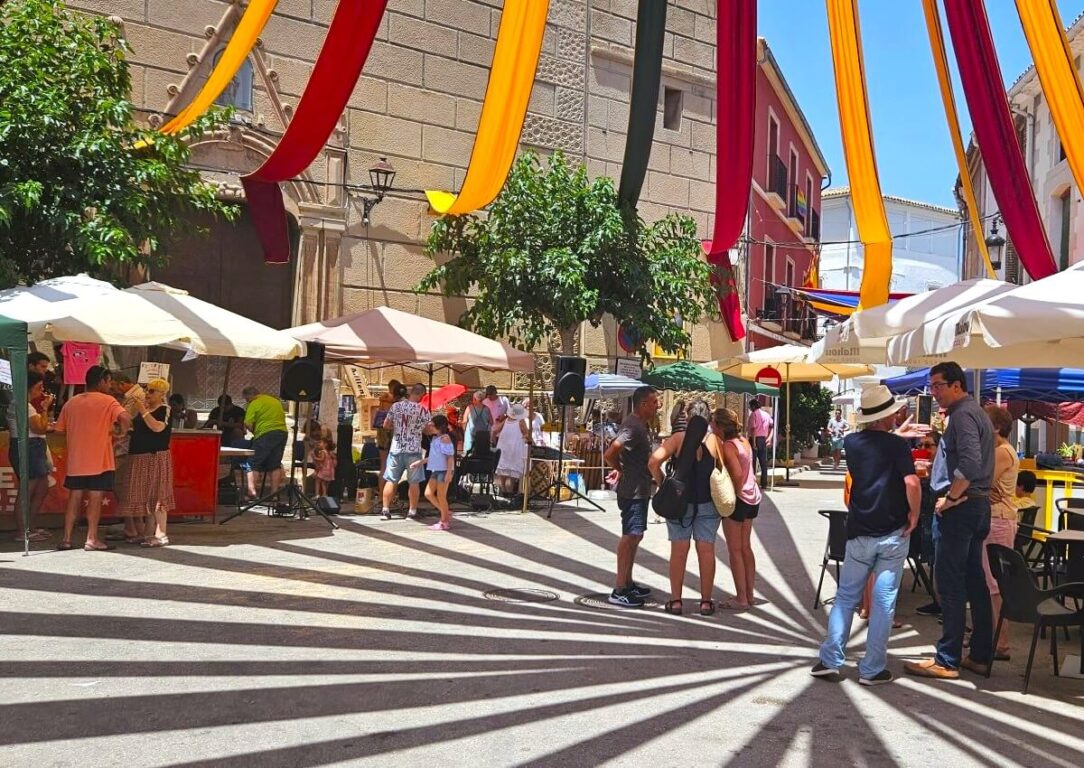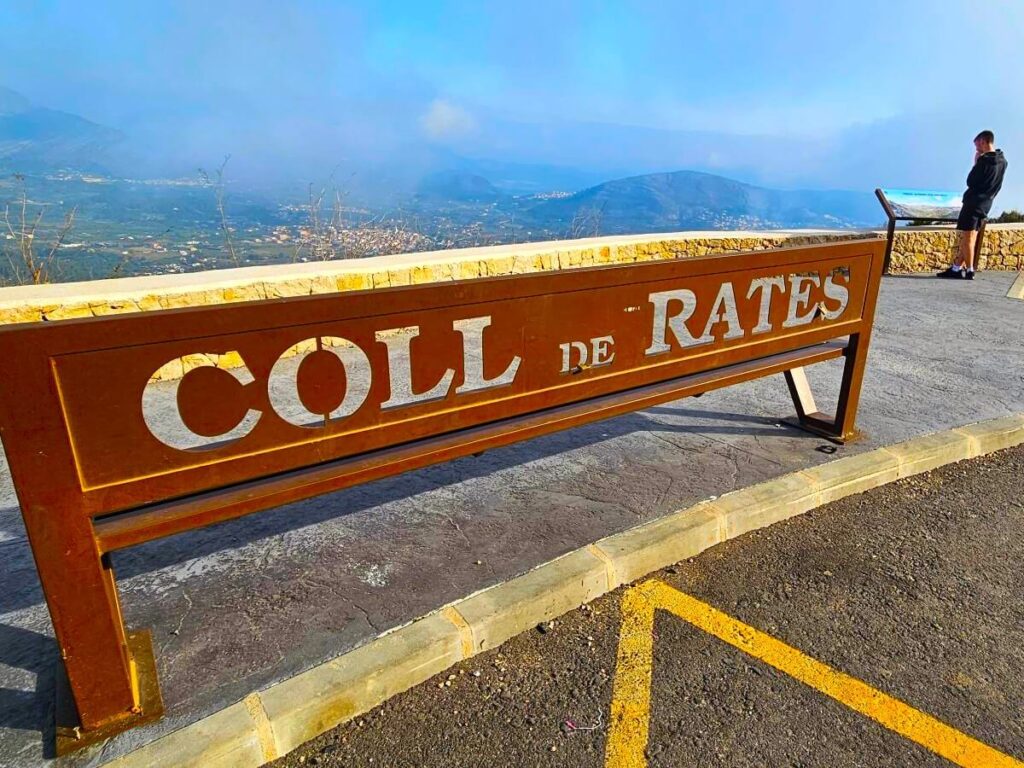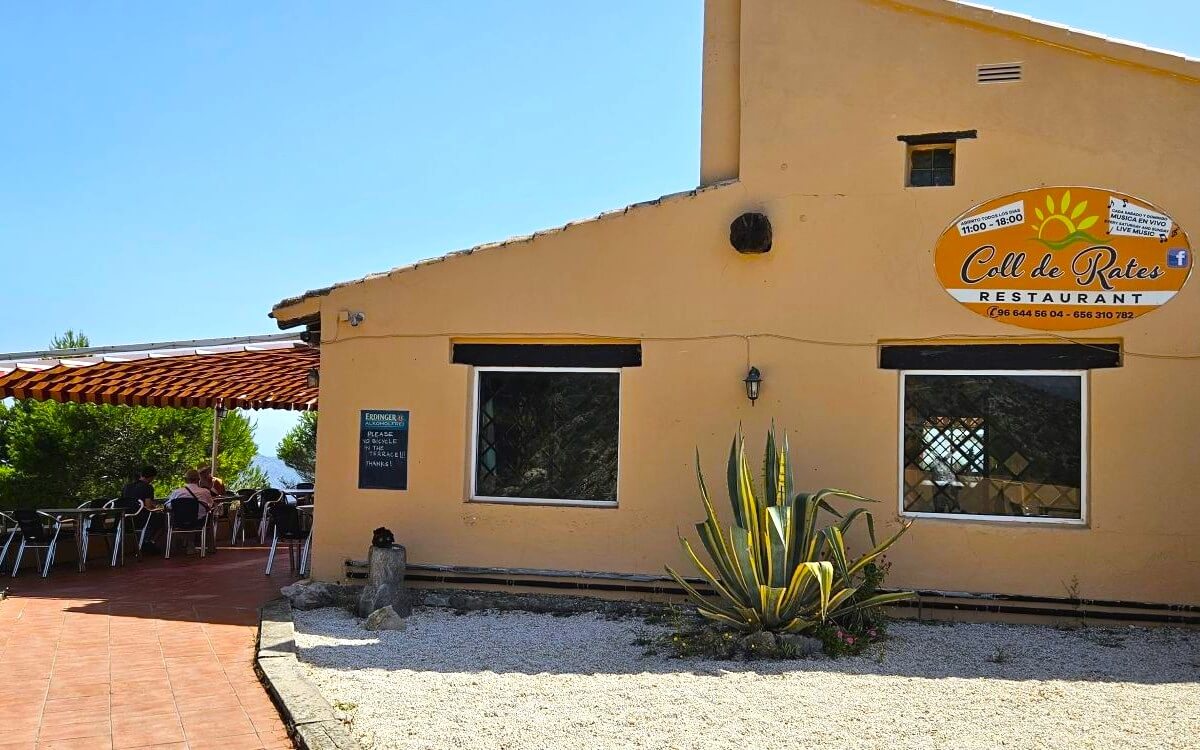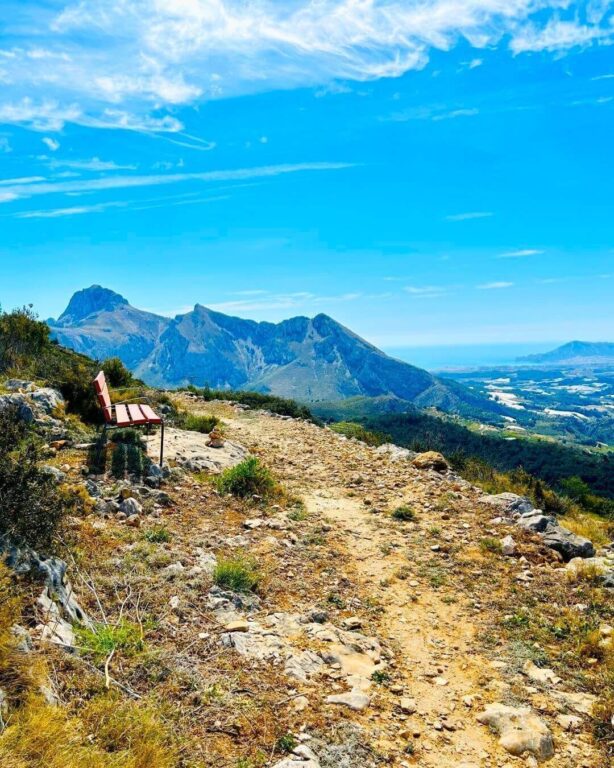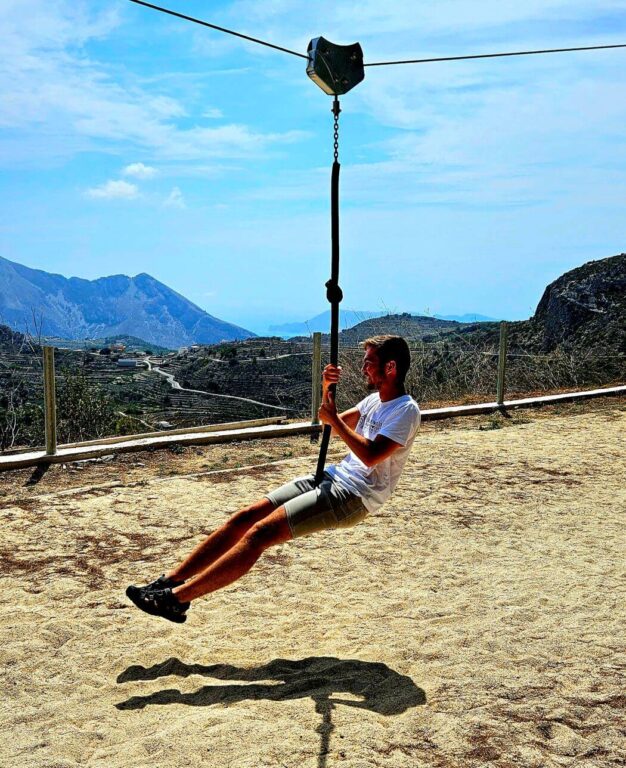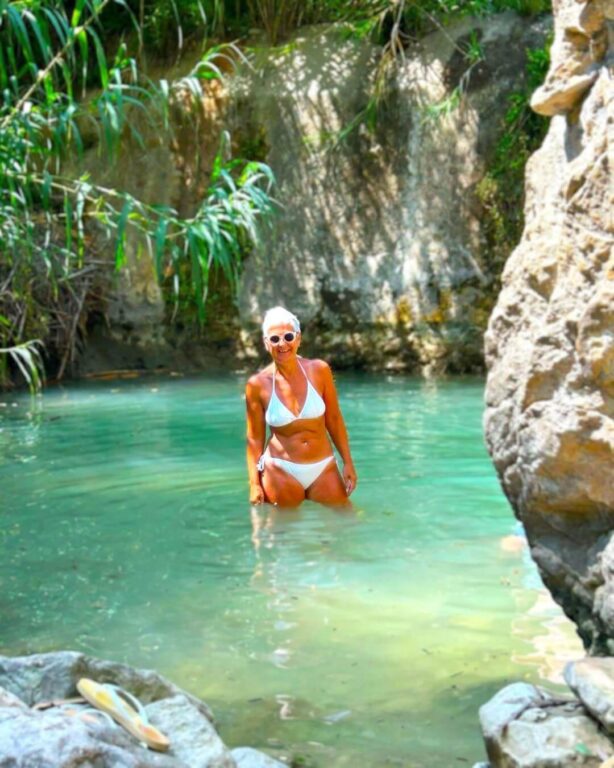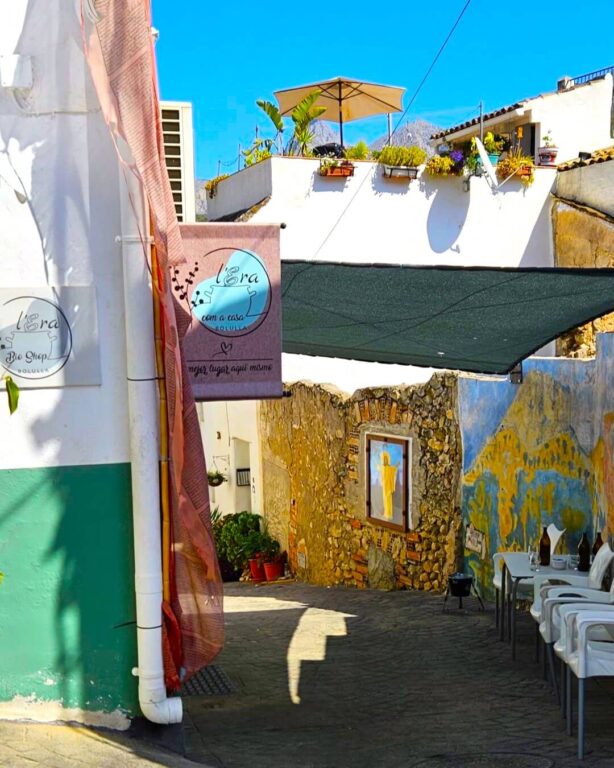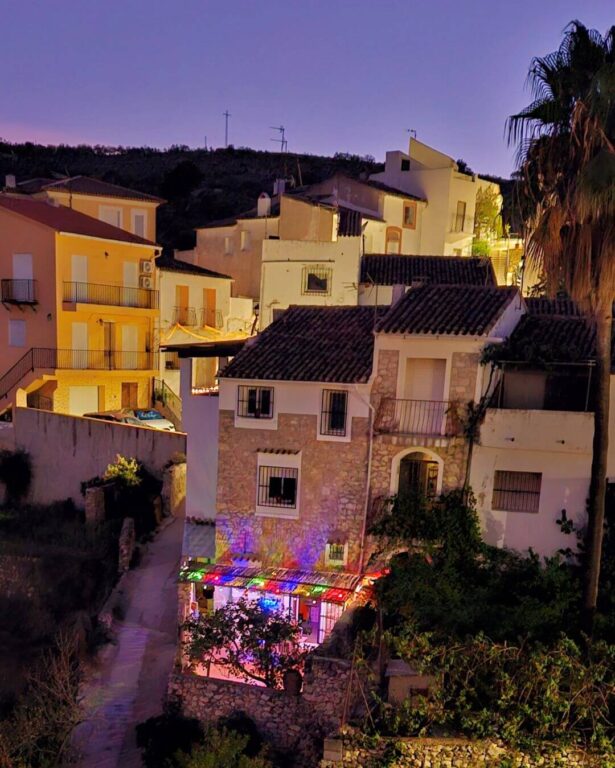Food & Drink in Tàrbena
The advantage of a holiday in a Spanish village is that after a while you begin to feel like … a local.
You might enjoy your morning cortado and tostada con tomate at the same bar, and receive a friendly smile and a daily ¿Cómo estás?
There are a handful of establishments in and around Tàrbena where you might choose to be a regular, as well as providing an ideal opportunity to speak a little Spanish!
Bar la Plaça
In Spain, there’s always a bar in the plaza.
And it’s usually called Bar Plaza – unless you’re in the Valencian and Catalan speaking regions where Plaça is the word.
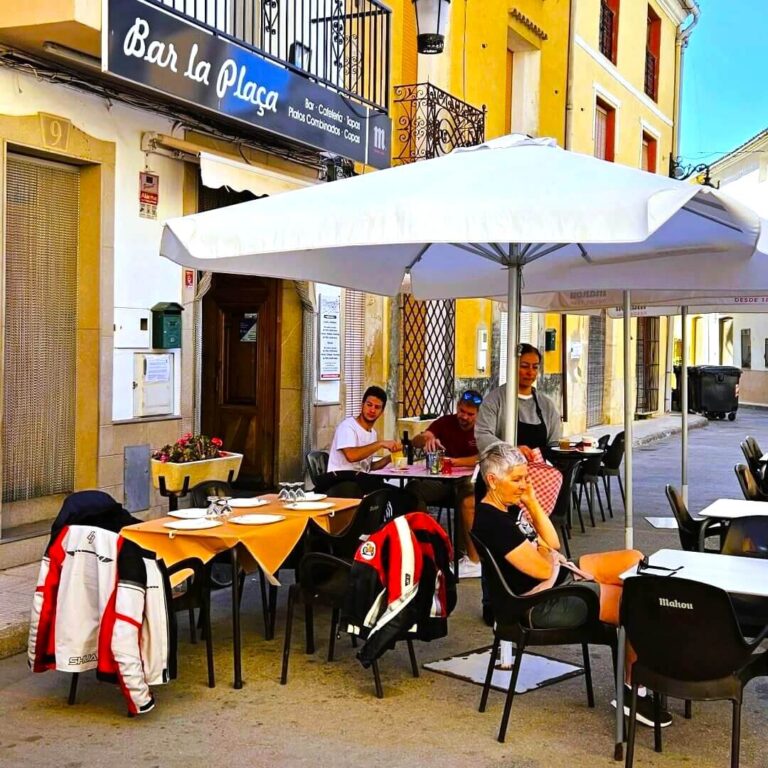
Bar la Plaça
A typically austere village bar, dark and cool inside to offer sanctuary during a hot summer, while tables and parasols are set up in the plaza.
Mornings can be quite busy but it’s rare not to be able to get a table outside.
Unless it is one of the many fiestas that take place during the year and the whole village seems to be in party mode!
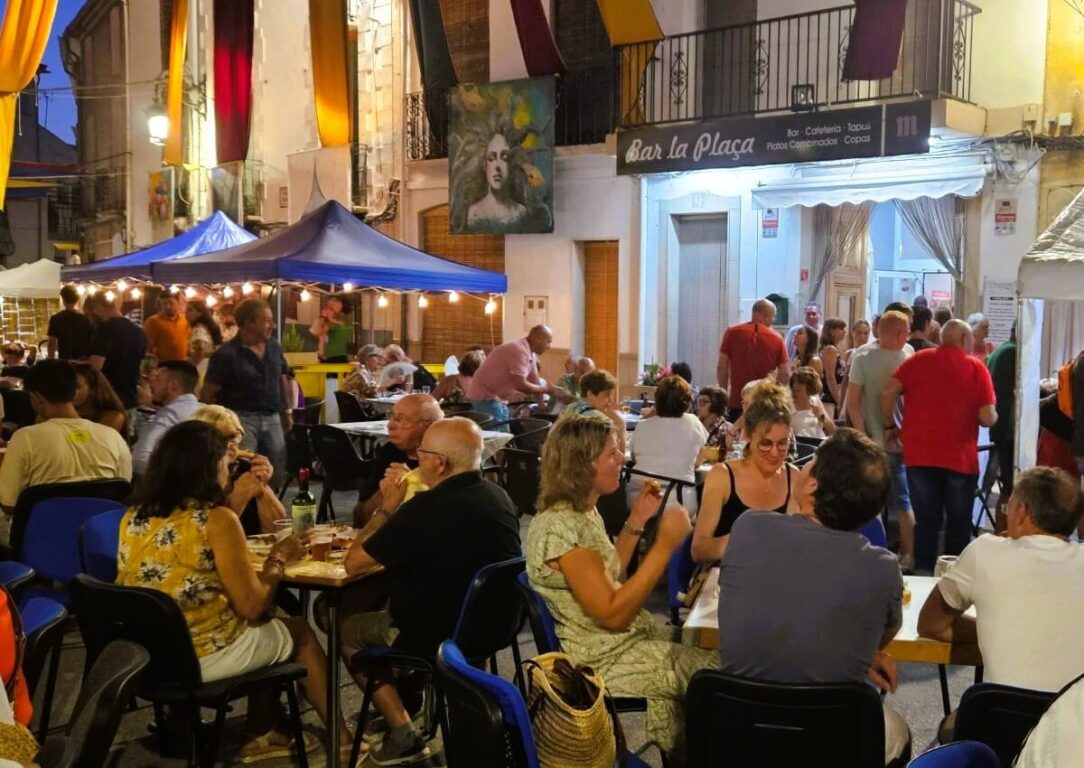
Bar la Plaça during Fiesta
Dolç i Salat
The most recent addition to the hospitality fraternity in the village, Dolç i Salat, is a rather cool café with a warm welcome.
Located in Plaza Mayor opposite Bar la Plaça, the name comes from the Catalan for Sweet & Savoury.
And they do both really, really well!
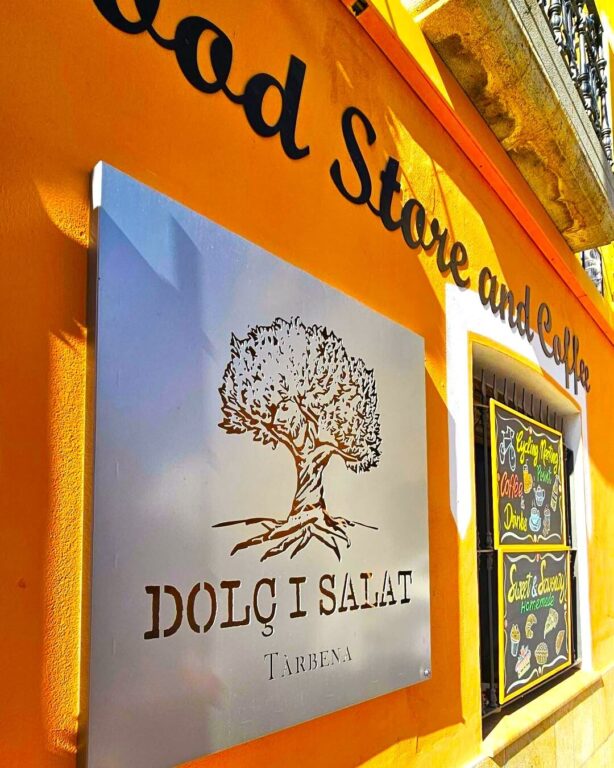
Dolç i Salat
There is nothing quite like sitting at a table in the sun, overlooked by a towering church and the peal of bells intermittingly sounding throughout the village.
In front of you a montadito and a small plate of jamón y queso accompanied by una copa de vino tinto.
Quintessentially Spanish you might say. And we would agree!
Can Pinet
A holiday in rural Spain can never be complete without a hearty Menú del día.
And in Tàrbena we know just the place…
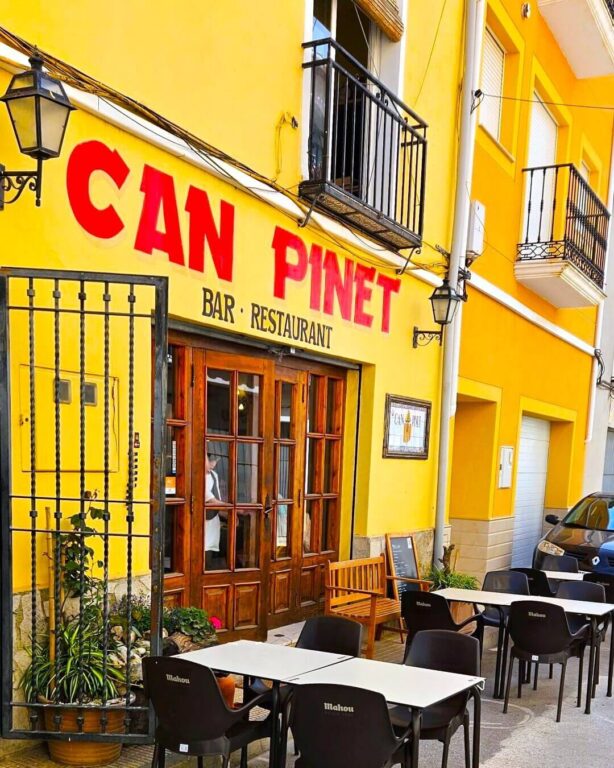
Restaurante Can Pinet
Unpretentious and traditional, Can Pinet oozes character. Once inside, you know that this place looked and felt the same twenty or thirty years ago.
And that’s a good thing.
An open kitchen allows you to see the magic happen. And if you select the slow-cooked lamb shoulder, you’re bound to fall under the Can Pinet spell.
Family-run and homely, dining here is such an exquisitely Spanish experience – even when staying down on the coast we’ll drive up into the mountains to enjoy a hike followed by lunch at Can Pinet.
C’as Pelut
Just outside of Tàrbena you will find C’as Pelut.
It’s a time capsule of a place; more like someone’s summer retreat than a restaurant.
It could be the 1980s and why not, C’as Pelut first opened its doors in 1983 and now 3rd generation, Felip and Amparo, oversee proceedings just as their grandparents did decades ago.
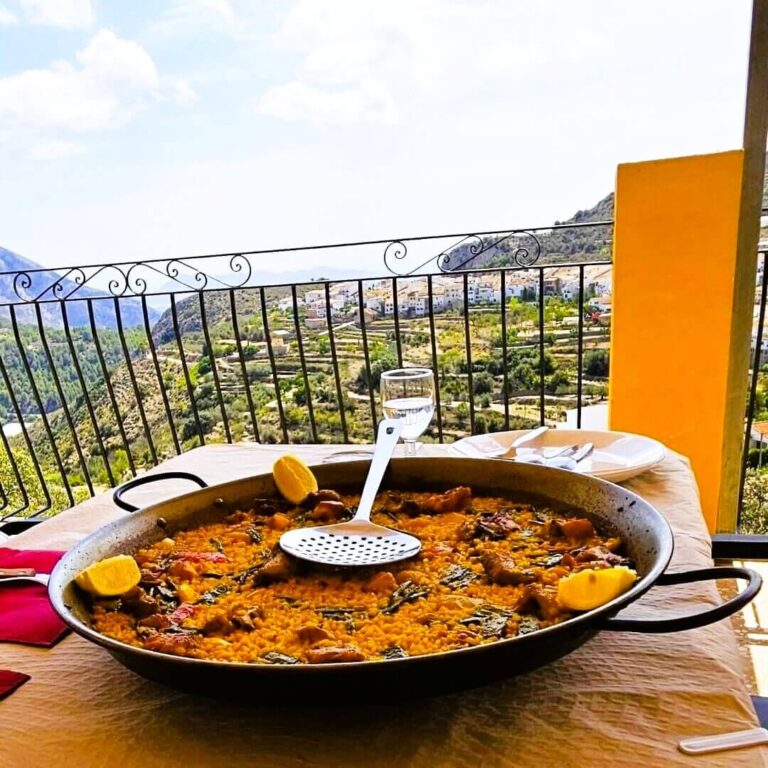
Paella Lunch at C’as Pelut
A shared pan of paella on the terrace, overlooking the village; it might not be everyone’s idea of heaven, but for us this is what a holiday in the Spanish mountains is all about.
Homemade food in a place far from home that feels just like being home. Yes, heaven is a place called C’as Pelut!
Sa Canterella
The first time we had a holiday in Tàrbena was also the first time we stepped into Sa Canterella.
Now run by Paco and his wife Lola, but back then by Paco’s father, Sa Canterella is one of those environments in el campo that helps define what makes a good holiday.
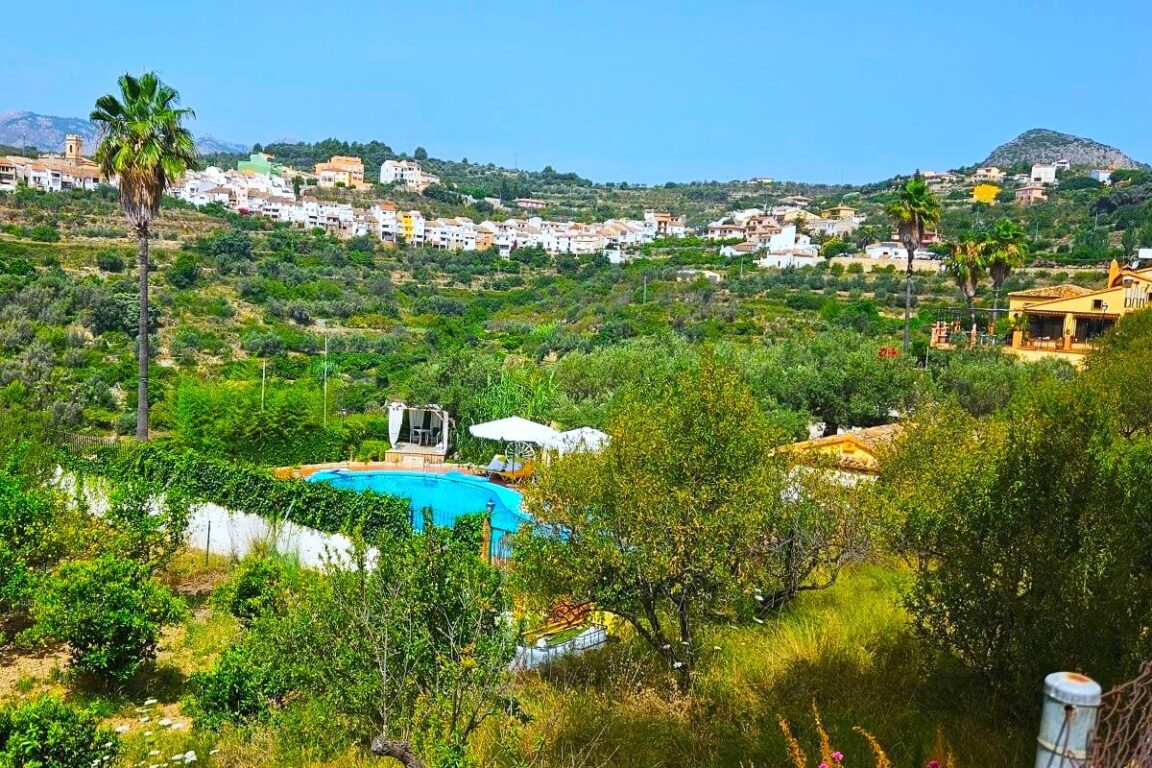
Sa Canterella
The lusciously verdant setting is surrounded by palm trees with memorable views back across the valley to the village.
And the swimming pool is a blessing during the height of summer while the menu continues to delight us each time we return.
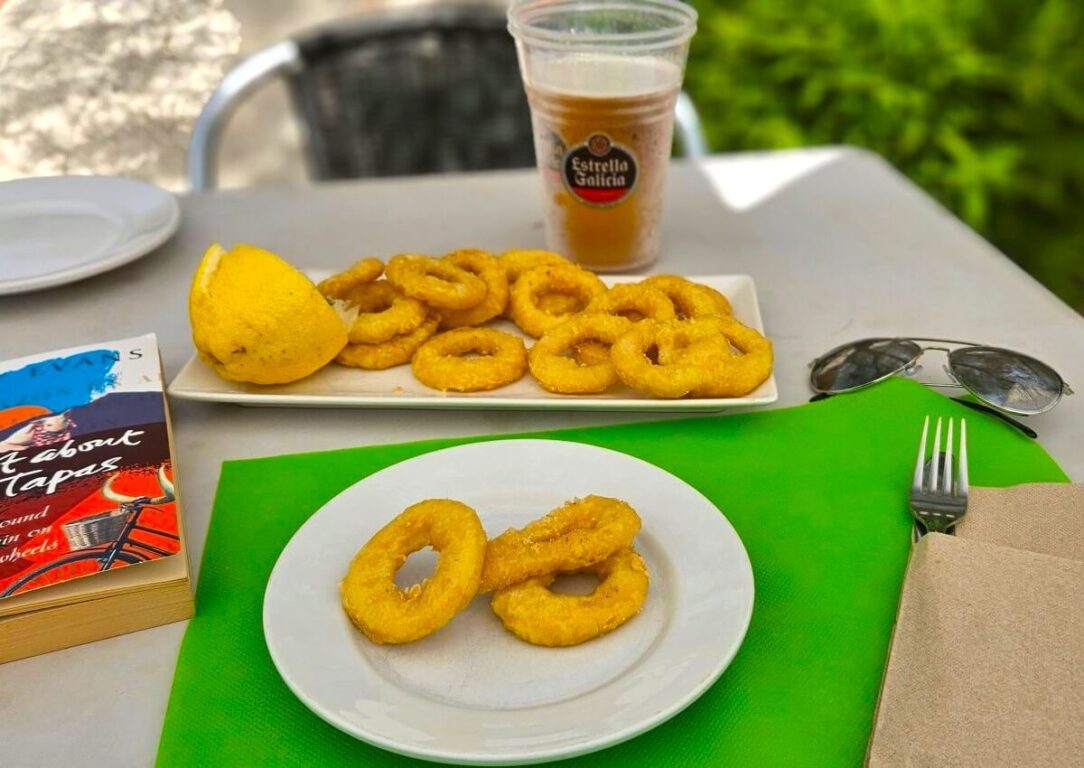
Calamares y Cerveza
As the sun heats up and morning turns into afternoon, there’s only one more addition to make this the best of days: Mojito!
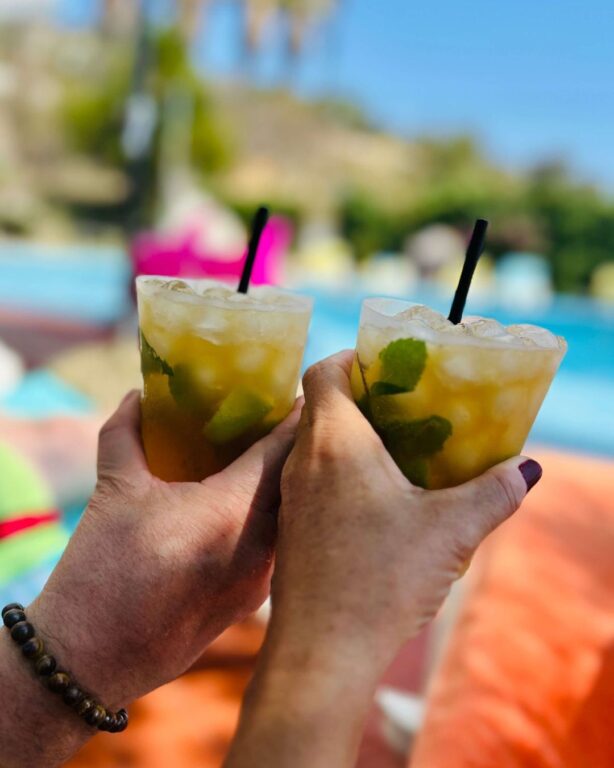
Mojito Time
With freshly picked mint fed into the glass that first sip is so incredibly aromatic; and with the sound of music humming gently in the background and a brilliantly blue sky above, it’s easy to understand why we keep on coming back to this village in the mountains.
Can Ran
It is more than likely that you’ll be staying in self-catering accommodation when on holiday in Tàrbena.
But even though you may be in a hotel or B&B, make sure to pop down early to Ca Ran, the village baker.
Fresh bread and croissants from the oven, still warm in the paper they are wrapped in.
And the best Pan de Chocolate this side of France; although the Spanish refer to these sublime pieces of pastry as Napolitano de Chocolate.
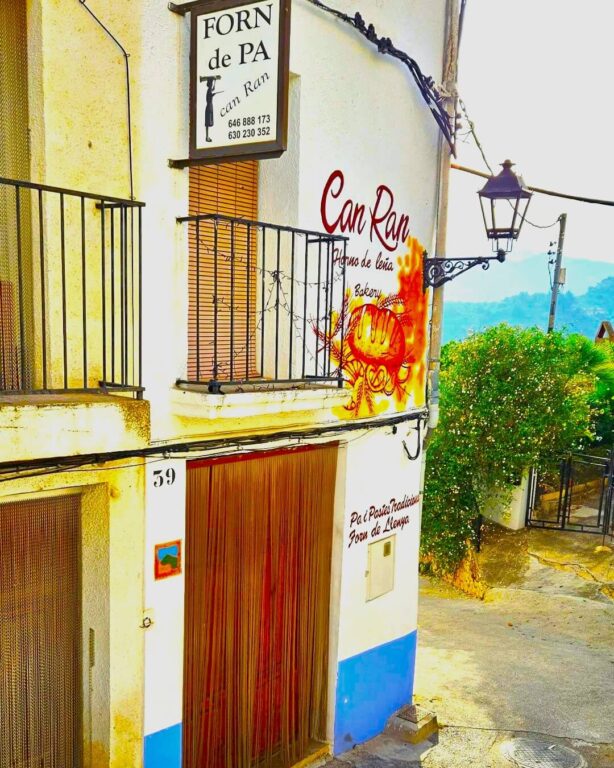
Can Ran Bakers
